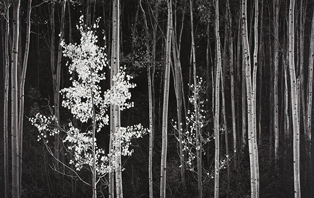Landscape Photography
One of America's greatest photographers, Ansel Easton Adams is best known for his black and white landscape photographs of the American West and specifically, the Yosemite National Park. In addition to being a pioneer of documentary photography, he is credited with developing the Zone System, a photographic development system which added depth and character to his work. Along with other creative photographers like Imogen Cunningham and Edward Weston, Adams founded Group F/64, which in turn led to the creation of the Museum of Modern Art's department of photographic art. Many of his landscape photos are instantly recognisable and have been reprinted on calendars, posters and books. Among the most famous examples of his lens-based images are The Tetons and the Snake River (1942) and Moonrise, Hernandez, New Mexico (1941). Although the lack of a human presence in his photographs may have contributed to their popularity, it failed to satisfy everyone. The famous French photographer Henri Cartier-Bresson (1908-2004) commented at the time of the Second World War: "The world is falling to pieces around us and all Adams photographs is rocks and trees." He was made a fellow of the American Academy of Arts and Sciences in 1966.



